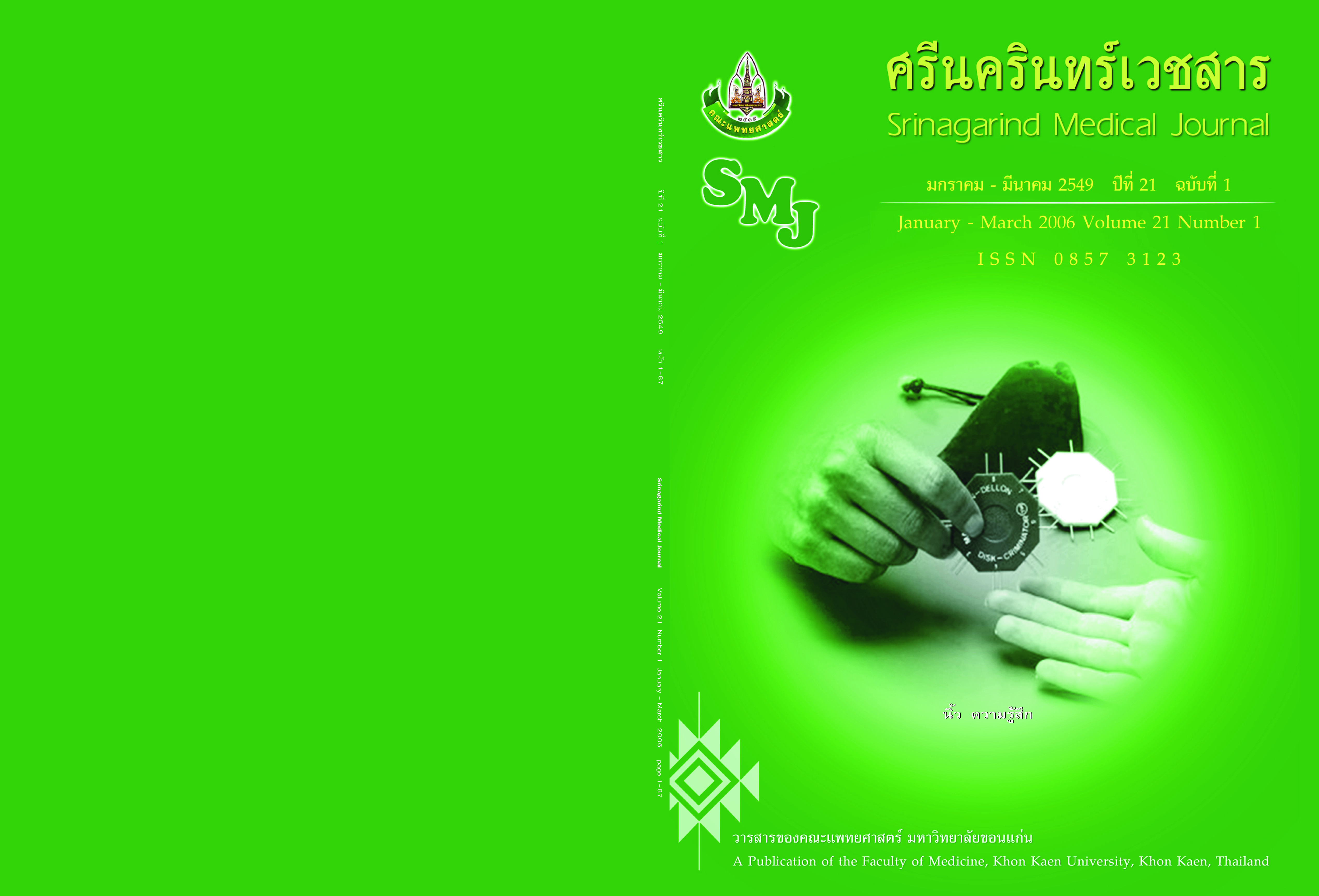Bacterial contamination of the laryngoscope blades after 4% hibiscrub and 70% alcohol decontamination under plastic bag covering
Abstract
Abstract
Background: Contaminated laryngoscope blades may be the cause of respiratory tract infection in patients intubated under general anesthesia. In a previous study done at Srinagarind Hospital (2002)1, a high incidence of contaminated laryngoscope blades was found. Methods for effective cleaning of laryngoscope blades are needed to improve patient safety.
Objective: To determine the incidence of microbial contamination of laryngoscope blades after decontamination with 4% hibiscrub and 70% alcohol with a plastic bag covering.Design: Descriptive study
Methods: We collected curved laryngoscope blades (number 3) after use in the surgery at Srinagarind Hospital between June 2004 and January 2005. All of the blades were sterilized with 4% hibiscrub followed by a wiping with 70% alcohol while covered with a plastic bag. Swabs samples were then taken by wiping a cotton bud along the base to the tip of blade then cultured. The results were recorded as positive or negative findings.
Results: Ninety-nine samples from laryngoscope blades were collected. The incidence of positive findings among the sterilized laryngoscope blades after using the chemical method was 2.02 % (95%CI 0.25, 7.11) (2 samples). The organisms were Staphylococcus coagulase negative and Streptococcus spp. Contamination of laryngoscope blades used in the ENT operation room and the Gynecological operation room.
Conclusion: Our technique for laryngoscope blade sterilization resulted in a low incidence of contamination (2.02%) . Consideration should be given this approach to sterilization, especially for patients with compromised immunity.
Keywords: Contamination, laryngoscope blade, sterilization




